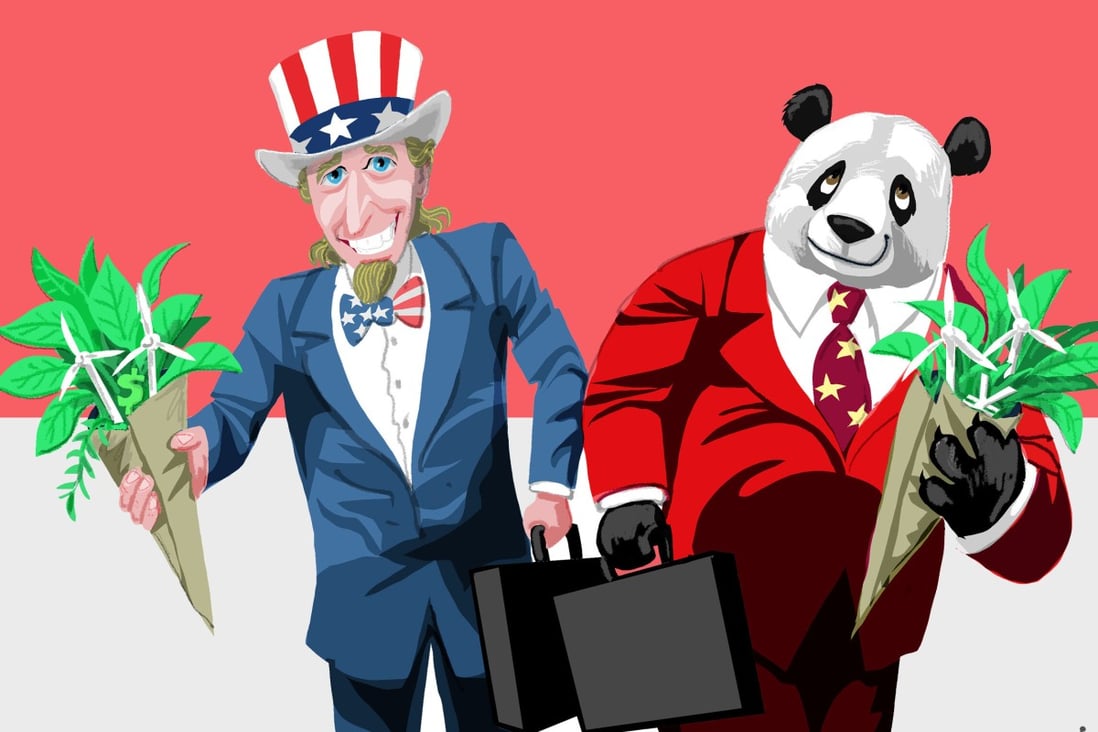
China and the United States are ramping up their efforts to gain influence in Southeast Asia. As the competition hots up, Indonesia is emerging as a prime target of their diplomacy. Asean released its Outlook on the Indo-Pacific statement in 2019 that is intended to serve as a framework for cooperation in the region. While US President Joe Biden has embraced this vision, Chinese President Xi Jinping has stressed cooperation through the Belt and Road Initiative. Biden clearly attaches great importance to Southeast Asia. In his first year in office, he has already sent his vice-president, secretary of state and secretary of defence to various Association of Southeast Asian Nation countries. Biden himself attended the East Asia Summit last October via video link.
The most recent trip to the region, by Secretary of State Antony Blinken in December, started in Jakarta, underlining the US charm offensive towards this non-aligned emerging power. The US leader deserves high marks for his efforts; not every president has paid as much attention to this region. The Obama administration’s “pivot to Asia” boosted US leadership in the region, but a lack of follow-through during Donald Trump’s term saw it decline amid a general slump in America’s global influence. The question now is whether Biden’s efforts will be enough to re-energise American leadership in Southeast Asia.
The US is playing catch-up. It seeks to reduce China’s influence in Southeast Asia, but China has many tools to use to maintain its advantage in the region, primarily its economic and infrastructure support through the Belt and Road Initiative. In his phone conversation with Indonesian President Joko Widodo last month, Xi called on both countries to integrate their belt and road cooperation into their development goals, and pledged China’s full support to promote Indonesia’s development and deepen cooperation. China has also actively promoted relations with Asean this past year. Foreign Minister Wang Yi has visited all 10 Asean countries since October 2020. In 2021, China consolidated the basis for cooperation in the region and provided new impetus for future collaboration. First, the two sides have become each other’s largest trading partner since 2020. They jointly prepared for the implementation of Regional Comprehensive Economic Partnership on January 1, and will work on an upgrade of the China-Asean Free Trade Area.
This year, the high-speed railway linking China and Laos is not only the highlight of China-Asean relations and the Belt and Road Initiative, it also carries great significance for Laos, a landlocked country hungry for development.
Second, in terms of security, it is generally believed that the South China Sea is a thorn in the relationship between China and Southeast Asia. However, after the China-Asean Declaration on the Conduct of Parties in the South China Sea was signed in 2002, work is ongoing to finalise a code of conduct and so far the parties have successfully controlled their differences without military conflict.
Third, in terms of overall cooperation with Asean, the current focus is on promoting economic development and dealing jointly with the pandemic. Last November, China upgraded its relations with Asean from a strategic partnership to a comprehensive strategic partnership. Meanwhile, Biden’s Indo-Pacific strategy in Southeast Asia has three main components: security, political and economic – the last being its weakest link. The US has strengthened the Quadrilateral Security Dialogue with its Quad partners Australia, India and Japan, and established the Aukus alliance with Britain and Australia. But so far it has excluded itself from two major free trade agreements in Asia. Biden has pledged to create an Indo-Pacific economic framework that will deepen US trade and investment in the region. But where Asean countries are concerned, actions will speak louder than words. It is still too early to judge the recovery of US leadership during Biden’s term. Indonesia, Asean’s most populous country and a member of the G20, has considerable influence in Southeast Asia.
China assigns great importance to Indonesia and has become one of the largest investors in the country, spending billions of dollars on building new highways, power plants and the Jakarta-Bandung high-speed railway. About 80 per cent of Covid-19 vaccines in Indonesia come from China. The key question is whether Indonesia will choose sides between China and the United States. No doubt, it would prefer relations with Beijing and Washington to be mutually beneficial and contribute towards peace and stability.
So what role can Indonesia play in Asean’s outlook? First, it must keep pace with the times, in light of the changing situation and taking account of the needs of both China and the US. And if major powers want to win support in the region, they must go beyond self-interest and big-power competition. Indonesia must maintain its own foreign policy path and direct the potential energy of major power competition into strengthening Asean.
Second, it should find where collaboration needs to be strengthened and incorporate it into institutionalised cooperation systems. For example, the recently released Asean-China Joint Statement on Enhancing Green and Sustainable Development Cooperation can become the channel for implementing Asean’s vision of “an Indo-Pacific region of development and prosperity for all”.
Similarly, the Regional Development Cooperation Agreement signed in 2020 between Asean and the United States Agency for International Development, will have a role to play. A healthy rivalry between China and the US in Southeast Asia can strengthen international development cooperation under the framework of the Asean Outlook on the Indo-Pacific. Major-power competition could lead to great benefits, not only for Asean member states, but also for the whole region.
Resource: https://www.scmp.com/comment/opinion/article/3165650/how-indonesia-and-rest-asean-can-benefit-us-china-competition
